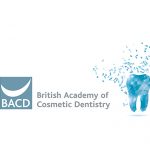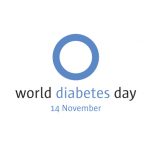 Over the last 40 years, the number of people with diabetes has risen from 108 million to 422 million worldwide.[i] It is estimated that there are at least 4 million people in the UK living with either diagnosed or undiagnosed diabetes, and this figure is predicted to increase to 5 million by 2025.[ii] These alarming statistics emphasise the importance of World Diabetes Day, which takes place every year in November and is co-ordinated by the International Diabetes Federation (IDF) to help raise awareness of the condition, and encourage people to seek the care they require to prevent or manage it. As dental professionals, it is vital that we understand the effects of diabetes on general and oral health, so that we can provide relevant treatment to those with the disease.
Over the last 40 years, the number of people with diabetes has risen from 108 million to 422 million worldwide.[i] It is estimated that there are at least 4 million people in the UK living with either diagnosed or undiagnosed diabetes, and this figure is predicted to increase to 5 million by 2025.[ii] These alarming statistics emphasise the importance of World Diabetes Day, which takes place every year in November and is co-ordinated by the International Diabetes Federation (IDF) to help raise awareness of the condition, and encourage people to seek the care they require to prevent or manage it. As dental professionals, it is vital that we understand the effects of diabetes on general and oral health, so that we can provide relevant treatment to those with the disease.
What is diabetes?
The pancreas produces a hormone known as insulin, which helps glucose (sugar) pass from the food we eat into our cells to be used as energy for the body. When a patient has diabetes, their body either does not make enough insulin, or cannot use it as well as it should, which results in high levels of glucose remaining in the blood.[iii] The most prevalent types of diabetes are type 1 and type 2, but patients can suffer from other rarer types of diabetes. With type 1 diabetes, the body’s immune system attacks beta cells in the pancreas until it is incapable of producing insulin. Type 1 diabetes is usually diagnosed in children and young adults, but it can occur at any age. This condition can be managed by taking insulin every day, but it is currently incurable and irreversible.
Type 2 diabetes is characterised by the body losing its ability to respond to insulin. The body tries to compensate for this by producing more insulin, but it cannot always produce enough. Over time, this effect can place strain on the beta cells in the pancreas, thereby destroying them and diminishing insulin production. People can develop type 2 diabetes at any age – even during childhood – but it is more prevalent in middle-aged and older individuals, and is the most common type of diabetes.[iv] Symptoms of type 2 diabetes can be similar to those of type 1, but are often less obvious. As a result, the disease may not be diagnosed until several years after onset, once complications have already risen. Although type 2 diabetes is also incurable, the latest research demonstrates that it is possible for some patients to put the condition into remission through diet changes, exercise, or weight loss surgery.[v]
How does diabetes affect the body?
Diabetes – especially when undiagnosed and uncontrolled – can cause long-term damage to many parts of the body. This is due to the fact that diabetes can damage blood vessels and nerves, restricting blood circulation throughout the body, and raising cholesterol and blood pressure levels. Patients with diabetes are two to four times more likely to die from cardiovascular disease (CVD) or stroke, compared to those who are free from the disease.[vi] Diabetics are also at a 40% increased risk of developing chronic kidney disease.[vii] In some cases, nerve damage as a result of diabetes may necessitate amputation of the affected extremity. Current figures show that 169 people in the UK each week are having to undergo a diabetes-related amputation procedure.[viii]
Beyond this, diabetes can have devastating effects on oral health. Periodontal disease is one of the most common oral complications of uncontrolled diabetes, with the risk of periodontitis being around three times higher for diabetics than non-diabetics.[ix], [x] The literature currently places great emphasis on a two-way relationship between the two conditions, meaning uncontrolled diabetes can increase inflammation in the periodontal tissue, while periodontitis can compromise glycaemic control, thereby exacerbating the severity of diabetes.[xi] Where a diabetic patient presents with a history of poor glycaemic control or poor periodontal health, referral to a specialist for required treatment to restore dental function and aesthetics may be necessary.
In this case, it is important to choose a referral partner who will be able to co-ordinate with you alongside allied professionals, in order to help patients manage the effects of diabetes on their periodontal condition. The multi award-winning Ten Dental+Facial team of clinicians are highly experienced in treating patients with complex oral health needs, including those who suffer from diabetes. They have the specialist knowledge and skills to treat both simple and advanced cases, providing a trusted referral service that ensures patients benefit from the highest quality care.
Diabetes is a serious concern, but the good news is that the risk of most diabetic-related problems can be minimised by maintaining glucose, cholesterol, and blood pressure levels within the recommended range. This ultimately comes down to following a healthy diet, exercising regularly, reducing alcohol intake, and avoiding smoking. So long as patients take these key steps, they can avoid developing diabetes altogether, or at the very least ensure that the disease does not become an overwhelming burden on their general health.
For more information visit www.tendental.com or call on 020 33932623
References
[i] World Health Organisation. (2018) Diabetes. Link: https://www.who.int/news-room/fact-sheets/detail/diabetes. [Last accessed: 04.07.19].
[ii] Diabetes.co.uk. (2019) Diabetes Prevalence. Link: https://www.diabetes.co.uk/diabetes-prevalence.html. [Last accessed: 04.07.19].
[iii] Diabetes.co.uk. (2019) What is Diabetes? Link: https://www.diabetes.co.uk/what-is-diabetes.html. [Last accessed: 04.07.19].
[iv] National Institute of Diabetes and Digestive and Kidney Diseases. (2016) What is Diabetes? Link: https://www.niddk.nih.gov/health-information/diabetes/overview/what-is-diabetes. [Last accessed: 04.07.19].
[v] Lean, E. J. M., Leslie, W. S., Barnes, A. C., Brosnahan, N., Thom, G., McCombie, L., Peters, C., Zhyzhneuskaya, S., Al-Mrabeh, A., Hollingsworth, K. G., Rodrigues, A. M., Rehackova, L., Adamson, A. J., Sniehotta, F. F., Mathers, J. C., Ross, H. M., McIlvenna, Y., Welsh, P., Kean, S., Ford, I., McConnachie, A., Messow, C-M., Sattar, N. and Taylor, R. (2019) Two-year results of the randomised Diabetes Remission Clinical Trial (DiRECT). Link: https://www.directclinicaltrial.org.uk/Pubfiles/Final%20accepted%20draft,%20prior%20to%20editing%20and%20corrections.pdf. [Last accessed: 04.07.19].
[vi] Bertoluci, M. C. and Rocha, V. Z. (2017) Cardiovascular risk assessment in patients with diabetes. Diabetology & Metabolic Syndrome. 9: 25. doi:10.1186/s13098-017-0225-1. Link: https://www.ncbi.nlm.nih.gov/pmc/articles/PMC5397821/. [Last accessed: 04.07.19].
[vii] Gheith, O., Farouk, N., Nampoory, N., Halim, M. A. and Al-Otaibi, T. (2015) Diabetic kidney disease: world wide difference of prevalence and risk factors. Journal of Nephropharmacology. 5(1): 49–56. Link: https://www.ncbi.nlm.nih.gov/pmc/articles/PMC5297507/. [Last accessed: 04.07.19].
[viii] Diabetes UK. (2018) Diabetes not taken seriously by UK public. Link: https://www.diabetes.org.uk/about_us/news/be-in-the-know-diabetes-complications. [Last accessed: 04.07.19].
[ix] Vernillo, A. T. (2003) Dental considerations for the treatment of patients with diabetes mellitus. The Journal of the American Dental Association. 134(1): 24S-33S. Link: https://doi.org/10.14219/jada.archive.2003.0366. [Last accessed: 04.07.19].
[x] Mealey, B. L. and Ocampo, G. L. (2007) Diabetes mellitus and periodontal disease. Periodontology 2000. 44(1): 127-153. Link: https://doi.org/10.1111/j.1600-0757.2006.00193.x. [Last accessed: 04.07.19].
[xi] Preshaw, P. M., Alba, A. L., Herrera, D., Jepsen, S., Konstantinidis, A., Makrilakis, K. and Taylor, R. (2012) Periodontitis and diabetes: a two-way relationship. Diabetologia. 55(1): 21–31. doi:10.1007/s00125-011-2342-y. Link: https://www.ncbi.nlm.nih.gov/pmc/articles/PMC3228943/#CR10. [Last accessed: 04.07.19].





 There’s no doubt that digital smile design (DSD) has revolutionised the provision of dental treatment. Clinicians can use the latest technology and software to take videos and photographs, and create digital mock-ups of a patient’s dental and facial features. This provides a clearer representation of the relationship between a patient’s lips, teeth, and gums, and how they work together to form the smile. This data can then be used to formulate a tailored treatment plan to achieve more effective and predictable results.
There’s no doubt that digital smile design (DSD) has revolutionised the provision of dental treatment. Clinicians can use the latest technology and software to take videos and photographs, and create digital mock-ups of a patient’s dental and facial features. This provides a clearer representation of the relationship between a patient’s lips, teeth, and gums, and how they work together to form the smile. This data can then be used to formulate a tailored treatment plan to achieve more effective and predictable results.

 Over the last 40 years, the number of people with diabetes has risen from 108 million to 422 million worldwide.
Over the last 40 years, the number of people with diabetes has risen from 108 million to 422 million worldwide.

